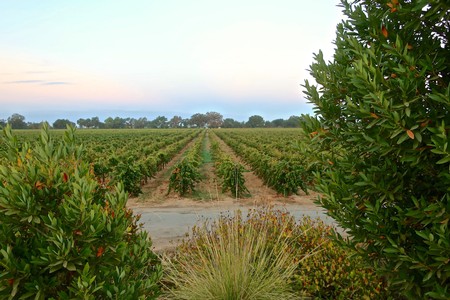
Last month (June 2020) we received a note from Clifford P. Ohmart — called, simply, “Cliff” by his colleagues throughout the agricultural industry as well as in Lodi, where he served as Lodi Winegrape Commission‘s Sustainable Winegrowing Director from 1996 to 2009. Prompted by our recent series detailing the history of winegrowing in the Lodi Viticultural Area, Dr. Ohmart suggested that we also consider posting “a detailed history of the evolution of Lodi’s sustainable winegrowing program.” Cliff’s reasoning:
Over the years, and twice in the last couple of months, I have read articles in the press about sustainable winegrowing programs and/or certification programs in California which do not give Lodi the proper credit for being the region of growers that paved the way for others, not only in California but in other parts of the U.S. and overseas.
As time goes by, there seems to be fewer and fewer people who know the history of how it all started and then evolved, including people who work for regional sustainable programs. This is part of the reason why some articles have gotten it wrong. There are some people belonging to major sustainable organizations (that is, groups other than LODI RULES for Sustainable Winegrowing) who truly believe their programs were the ‘first.'”
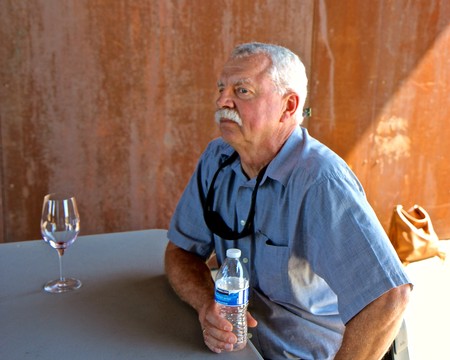
Addressing Dr. Ohmart’s admitted “frustration” at this state of affairs, let us simply say this, on behalf of both Cliff’s long legacy of work in the field of sustainability (a total of 41 years) and that of Lodi’s winegrowers: The first formalized, detailed approach to sustainable winegrowing now employed across the country and beyond, and embraced to the point of utilizing the exact same practices in almost word-for-word prescription, was first developed here in Lodi. It was, in fact, led by Cliff Ohmart, and driven by the growers who make up the Lodi Winegrape Commission (originally established in 1991 as the Lodi-Woodbridge Winegrape Commission, and now consisting of over 750 voting members).
Ohmart, who originally took his doctorate in entomology (U.C. Berkeley), first arrived in Lodi in 1995 to help the Lodi winegrowers write a grant for Biologically Integrated Farming Systems (BIFS). The motivation of the growers themselves was (and always has been) their own history and farming culture, built upon over 100 years of succession. Many of Lodi’s leading farming families — a number of whom now own and operate successful wineries, large and small — trace their roots in the agricultural zones surrounding the City of Lodi as far back as the 1850s.
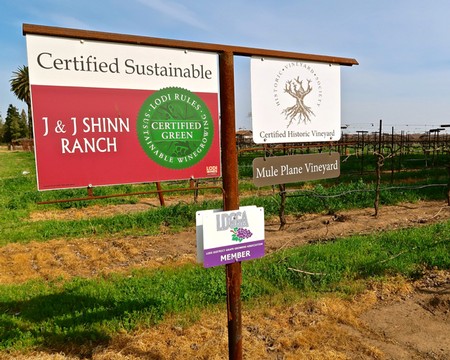
Hence, the growers’ motivation to establish an all-encompassing guide to sustainability specific to wine grape farming. Sustainable agriculture is, after all, defined as a way of farming that —
• Enhances the environmental quality upon which quality farming and businesses depend
• Makes efficient use of nonrenewable resources and resources found within each farm (or in the case of winegrowers, each vineyard)
• Enhances and sustains the economic success of these operations
• Enhances the quality of life of farmers, their families and employees, their communities and society as a whole
• Increases the ability of future generations to integrate and achieve these same goals
— and in this sense, these practices are in correlation with the long term goals, values and sensibilities of Lodi winegrowers.
There is, as it were, no one more qualified to write out a detailed history of Lodi’s sustainable winegrowing program than its primary architect, Dr. Ohmart himself.
That said, the following exposition represents Cliff Ohmart’s own accounting of the program that would cumulate as LODI RULES for Sustainable Winegrowing, while serving as the blueprint for sustainable winegrowing programs all across the U.S. and in other wine regions around the world.
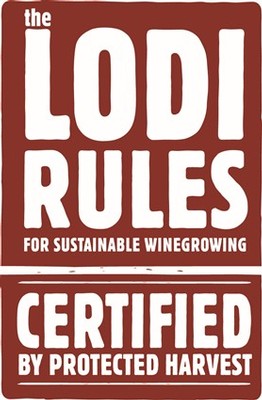
In Dr. Ohmart’s words:
1991-1994 — Inception
When the Lodi-Woodbridge Winegrape Commission was established in 1991, it was suggested by one of the grower-members that they should establish an Integrated Pest Management (IPM) program for the region. The Commission got a small grant from the state and they contracted with an IPM consultant to develop and manage the program. His name was Dr. Dennis Culver, who got his PhD in Entomology/IPM from the University of California Riverside. I believe this was the start of organized grower field days on important IPM topics, focused on IPM of mites and leafhoppers. This included field trials of planting prune trees near vineyards, which at the time were thought to be refuges for Anagrus wasps, which are important parasites of grape and variegated leafhoppers. I also believe some trials were done on cover crops and under-the-vine weed management utilizing practices such as mulch and mechanical weeding.
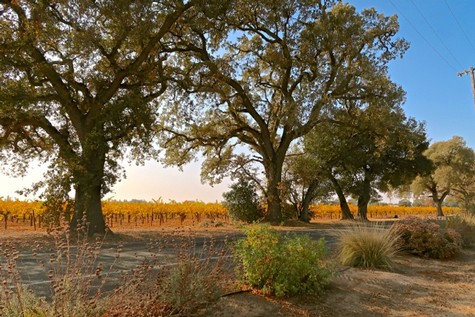
1996-2006 — Biologically Integrated Farming Systems program (BIFS)
In 1995 the Lodi Winegrape Commission became interested in contracting with a new person to manage their IPM program. They contacted Scientific Methods Inc. of Chico, California, a private IPM company specializing in IPM of orchard crops (particularly almonds, walnuts, prunes and pistachios). The Commission asked Scientific Methods to write a grant for them to submit to a brand-new grant program offered by U.C. Davis‘ Sustainable Agriculture Research and Education Program (UC SAREP). The name of the grant program was Biologically Integrated Farming Systems (BIFS).
I was the person at Scientific Methods Inc. chosen to write the grant proposal with the Lodi Winegrape Commission. The application was successful and provided $300,000 to Commission over 3 years. A contract was signed between Scientific Methods and Lodi Winegrape Commission for managing the project, which I was chosen to lead. One year into the project the Commission offered me a position to run the program as an employee. Scientific Methods agreed to have me leave their employ, and I accepted the Lodi Winegrape Commission’s invitation to join their staff. Thus began my job as the organization’s first Sustainable Winegrowing Director, which I held until 2009 when I joined SureHarvest.
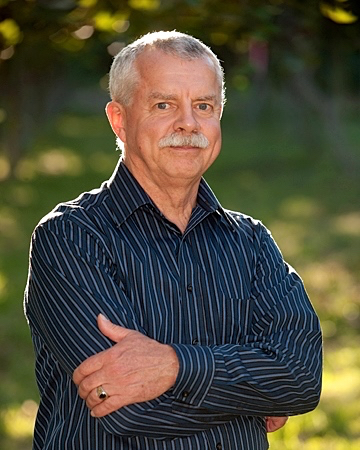
There were two major components to the BIFS project: 1) Outreach and Education; and 2) Demonstration. The Outreach and Education was directed at all 750 Lodi Winegrape Commission grower-members. It consisted of a comprehensive mix of meetings, workshops, field days, and a Newsletter (6 per year). One unique set of meetings was called “The Neighborhood Grower Meeting.” The goal of these meetings was to get all the Lodi growers on the same page in terms of “What is IPM?” A grower would provide me with the names of some of his or her neighbors, I would mail them a letter of invitation to come to the grower’s house one evening, and we would sit around the living room and discuss IPM. The letter was also signed by Paul Verdegaal, the U.C. Cooperative Extension Farm Advisor at the time, and he came to all the meetings, showing an amazing level of support for the BIFS program.
The Demonstration component was made up of 45 volunteer Lodi Winegrape Commission growers who picked one or two of their vineyards to be demonstration sites where they would try one or more sustainable farming practices. These were called their BIFS vineyards. There were 70 in all, totaling 2,300 acres. Their Pest Control Advisors (i.e. PCAs) also participated in the project. I visited all 70 vineyards myself along with a student intern during the growing season, monitoring for pests. We presented each grower and their PCA a data sheet from each vineyard each week recording what we saw.
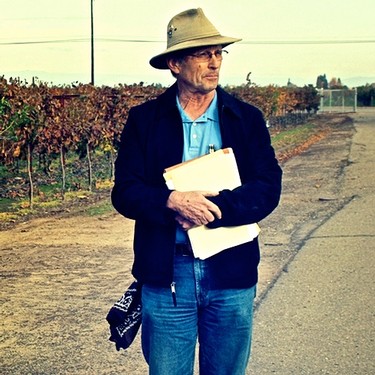
At the end of the growing season growers provided me with a record of the pesticides and fertilizers used in their BIFS vineyards and any cultural activities like tillage, mowing, and irrigation. I created a computer database system in which to input all the data and programed it to provide many different types of reports to give to the growers that summarized what had been done in their BIFS vineyards. In the winter I convened a meeting of the BIFS growers and their PCAs during which we would review data summaries from the BIFS vineyards and discussed what was learned.
Near the end of the 3-year BIFS grant we contracted with Dr Jeff Dlott, an Agricultural Consultant with survey expertise, to carry out a grower survey of Lodi Winegrape Commission members to measure the influence the BIFS program had on growers’ perceptions of IPM and other important sustainable winegrowing practices. And at the end of the 3-year BIFS grant funding, the BIFS growers and PCAs felt the program was so important they chose to continue it for another 7 years, with the help of Lodi Winegrape Commission funding.
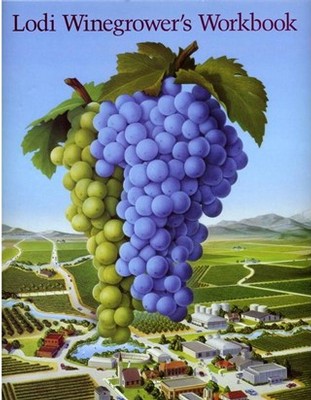
1998-2010 — Development of Lodi Winegrower’s Workbook
When the U.C. Davis Sustainable Agriculture Research and Education Program grant funds came to an end in 1998, I began searching for a new way to interact with Lodi growers on a one-on-one basis. At the time a group of Central Coast wine grape growers working with Woodbridge by Robert Mondavi Winery and UC SAREP had developed a self-assessment workbook call the Positive Point System. The Central Coast Vineyard Team (now known as The Vineyard Team) was formed in part to implement this workbook. I became intrigued with the idea of a self-assessment workbook for LWC growers.
At about the same time, Laurel Marcus, a consultant on the North Coast, had developed a workbook entitled “Fish Friendly Farming” that focused in particular on solving erosion problems created when farming wine grapes on steep slopes in the North Coast region. I felt that both workbooks (“Fish Friendly Farming” and Central Coast Team’s Postive Point System) were good, but they did not provide exactly what I was looking for in terms of a practical workbook that could be effectively utilized by Lodi Winegrape Commission grower-members.
During that same period, I came across another self-assessment workbook model that really captured my attention. It was created by a group in Madison, Wisconsin, called FARM*A*SYST (a.k.a. Farmstead Assessment System). One thing that impressed me was they had developed self-assessment workbooks for a range of cropping systems in a number of areas, including the U.S. dairy industry, farms in Ontario (The Environmental Farm Plan), and Australian cotton growers. Having all the elements I was looking for, it was a self-assessment that: 1) captured the good practices a grower was using; 2) pointed out the practices that growers were not doing but should consider implementing; 3) encouraged growers to create an action plan, based on their self-assessments, for implementing new practices the coming year.
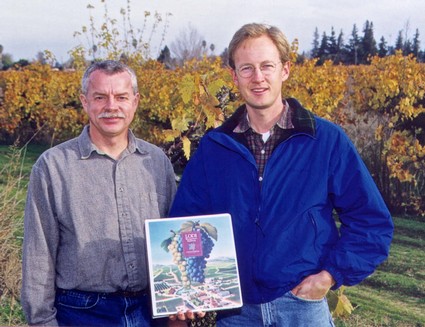
FARM*A*SYST was a workbook that encouraged continuous improvement over time — the essential goal of sustainable winegrowing. Another attribute of the workbook model was that self-assessment data was accumulated in a form that could easily be summarized to measure the level of implementation in the region of each practice, all contained in the workbook. In other words, it allowed for creating a detailed benchmark of sustainable winegrowing practices for a group of growers if they were willing to share their data.
The decision was made to develop a self-assessment workbook for Lodi winegrowers based upon the FARM*A*SYST model, with a focus on growing quality wine grapes using practices that are economically viable, environmentally sound, and socially equitable (the “three E’s” of sustainability). I secured grant funding to write the workbook, which enabled me to hire Steve Matthiasson to help with the project. We were also able to contract with Gary Jackson, the Director of FARM*A*SYST, to help us get the project off the ground. We formed a committee of Lodi growers, Pest Control Advisors, Ken Reeves (an East Bay Municipal Utility District wildlife biologist), Paul Verdegaal (U.C. Viticulture Farm Advisor), and a winemaker to create the workbook.
At the end of 1999 we were able to publish the workbook, which was entitled the “Lodi Winegrower’s Workbook: A Self-assessment of Integrated Farming Practices.” Steve and I used the Neighborhood Grower meeting idea to implement the workbook. A grower would invite their neighbors over to his or her house, Steve or I would show up with an armful of workbooks, and we would sit around the kitchen table and fill them out together. Over 18 months we held 35 workbook workshops attended by 235 growers. It was an amazing experience.
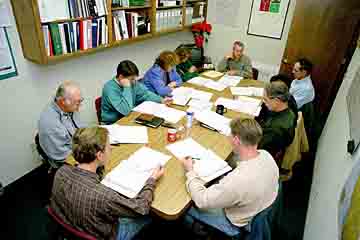
Word of the Lodi Winegrower’s Workbook program spread across the state. Karen Ross, President of California Association of Winegrape Growers, a.k.a. CAWG (now California Department of Food and Agriculture Secretary), and John DeLuca (President of Wine Institute) approached me to ask if it was possible to use the Lodi workbook as a model for creating a self-assessment workbook for the state’s entire wine industry, and also add new chapters for winemaking practices. They had also approached Jeff Dlott, who by this time had formed SureHarvest, to facilitate the project. I was given permission by the Lodi Winegrape Commission to explore this idea with Jeff, and we visited the leaders in other California winegrowing regions to show them the Lodi Winegrower’s Workbook and gauge their interest in a statewide project.
A consensus was built that a self-assessment workbook for the entire state based upon the Lodi Winegrower’s Workbook would be a great benefit to the industry. CAWG and the Wine Institute signed a Memorandum of Understanding with the Lodi Winegrape Commission giving them permission to use the chapters of the Lodi Winegrowers Workbook as the foundation for the viticulture chapters of a statewide workbook. The Commission gave me permission to work with Jeff to facilitate the development of the statewide workbook. Jeff and I facilitated a committee of about 50 growers, winemakers, PCAs, staffs from CAWG and the Wine Institute, and other stakeholders. We met for over a year to adapt the Lodi Winegrowers Workbook chapters for the statewide industry and the group contracted with John Garn, a consultant working on the winery side of sustainability, to help put together self-assessment chapters for winemakers.
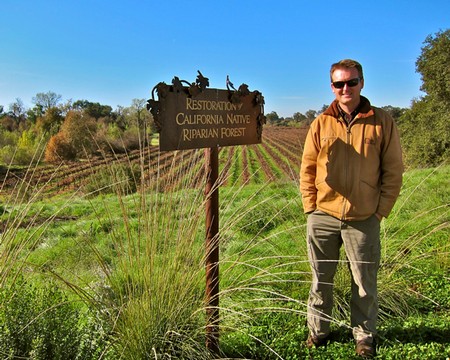
In 2002 the self-assessment workbook was completed, and it was entitled “The California Code of Sustainable Winegrowing” (CCSW). The Wine Institute and CAWG created the non-profit California Sustainable Winegrowing Alliance (CSWA) to begin the implementation of CCSW statewide.
Word about the Lodi Winegrower’s Workbook also began to spread across the country. I was invited to conferences in New York, the Midwest, and the State of Washington to conduct presentations on Lodi Winegrape Commission’s evolving sustainable winegrowing program. Using the Lodi Winegrowers Workbook as a model, New York created VineBalance, Washington developed Vinewise, and Michigan State University worked with juice grape growers to create Grape*A*Syst.
A second edition of the Lodi Winegrower’s Workbook was published in 2008. Many of the practices from the original workbook were revised, and the educational content was greatly expanded. A major contributor to the second edition was Chris Storm (now the Viticulturist for Lodi’s Vino Farms), who I was able to hire after Steve Matthiasson left for Napa Valley (where he is now owner/grower/winemaker of the acclaimed Matthiasson Wines).
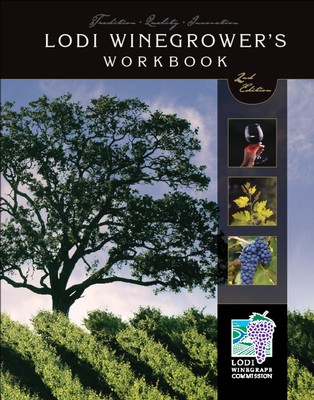
2001-2009 — LODI RULES for Sustainable Winegrowing
In 2001, after working with the Lodi Winegrower’s Workbook for about two years, some Lodi growers were asking if it would be possible to leverage Lodi’s growing reputation for their sustainable winegrowing practices in the marketplace. In other words, certification. I formed a small committee of growers and explored what was currently available. Food Alliance in the Pacific Northwest managed a certification program for many vegetable crops. They had a simple set of farming standards for wine grapes but it had not yet been used by anyone. We invited the Executive Director to come to Lodi to brief us on their program.
Another program we looked at was Low Input Viticulture and Enology. At the time it was called Oregon LIVE, and is now is simply LIVE. It was certified by the International Organization of Biological Control (IOBC), home-based in Switzerland. We also communicated with Protected Harvest, a relatively new national non-profit certification body that was certifying fresh market potatoes in Wisconsin. The exploratory committee concluded the most comprehensive and rigorous sustainable winegrowing practices were contained in the Lodi Winegrower’s Workbook, and that the Lodi certification program should be based on the workbook. Protected Harvest was chosen as the certification body to work with to develop the farming standards for sustainable winegrowing.
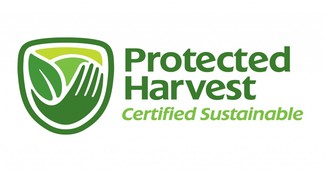
The layout of the Lodi Winegrower’s Workbook was never intended to be used as a set of certification farming practice standards, and therefore was not designed to be used as such. That is because each practice topic is made up of 4 categories of practices from less sustainable to the most sustainable for a given practice. It was therefore necessary to take the most sustainable practices from the workbook and create a set of farming practice standards to which a vineyard could be certified. I created a committee of 22 growers, PCAs, University of California Cooperative Extension experts, Lodi Winegrape Commission staff, a winemaker, and a wildlife biologist to create the farming standards to be used in certification. When completed they were submitted to Protected Harvest for endorsement, which in turn were sent out by Protected Harvest for peer review by viticulture scientists around the US. They were also reviewed by the Protected Harvest staff scientist as well as the Board of Directors, which consisted of leaders from NGO (nongovernmental) environmental groups, university research scientists, private pest management consultants, and business consultants.
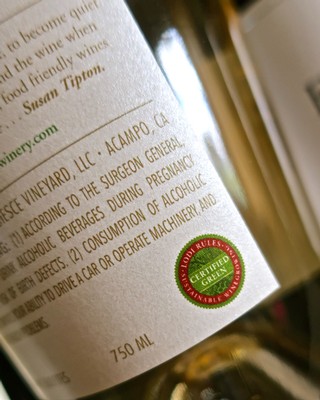
Protected Harvest endorsed our proposed standards for certification at the beginning of 2005. At the same time, Lodi Winegrape Commission and Protected Harvest partnered on a grant-funded project to do market research on the influence that certified sustainable wine might have on consumers. It also funded work on a marketing program that included finding a name for the certification program. At that time the Commission was working with Paul Wagner (founder of Balzac Communications) on overall marketing strategies, and they tapped into his expertise. It was Paul who came up with the name “Lodi Rules for Sustainable Winegrowing” (now capitalized as LODI RULES). Everyone involved liked that name. The program was officially launched for the 2005 growing season, and it became the nation’s first third party certified sustainable winegrowing program.
In 2005, six brave growers agreed to apply with Protected Harvest to have one or two of their vineyards certified by Lodi Rules for Sustainable Winegrowing, adding up to 1,455 acres. The growers in this first group included Jerry and Bruce Fry of Mohr-Fry Ranches, John Ledbetter (Vino Farms), Joe Dexter, Keith Watts (Watts Vineyards), Robert Pirie (Colligere Farm Management), and Robert Abercrombie (Sutter Home Winery). All 1,455 of their acres achieved certification.
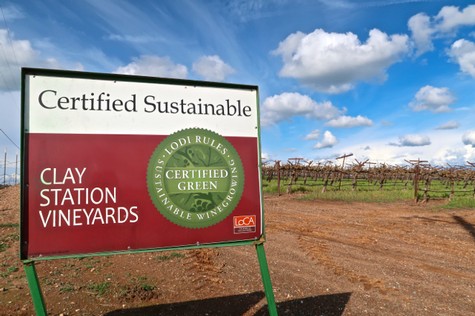
There was, in fact, a brief period of time when we were introducing LODI RULES to our growers, while still implementing the BIFS and The Lodi Winegrower’s Workbook programs, all at the same time. We were very busy in those days!
I count two early events as landmark occurences during our first few years of LODI RULES. The first was when the very first wine label bearing a “Lodi Rules” logo was approved by the TTB (Alcohol and Tobacco Tax and Trade Bureau, which regulates wine label language). The wine was Joe Dexter’s 2005 Lobo Loco Syrah. This was followed shortly thereafter by wines bottled by St. Amant Winery, Bokisch Vineyards, Herzog Wine Cellars, Valhalla Winery, and LangeTwins Family Winery & Vineyards.
The second major event was in 2008, when Michael David Winery decided to pay their growers substantial bonuses for LODI RULES certified grapes. Bogle Vineyards followed a year or two later, and other wineries soon after. It was estimated that by 2013 more than $1.4 million in yearly bonuses was being awarded to growers by wineries for LODI RULES certified grapes.
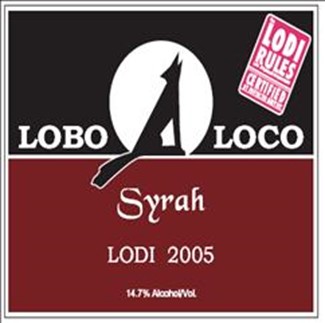
After discussions with Protected Harvest in 2008, Lodi growers made the bold decision to allow any wine grape grower in California to apply for LODI RULES certification. The number of LODI RULES certified vineyards outside the Lodi wine regionhas grown rapidly. Since then, the number of acres submitted for LODI RULES certification outside of California Crush District 11 (which aligns with the Lodi AVA) has surpassed the number of acres in Lodi itself. (Our note: for their own purposes, California growers with vineyards outside the Lodi region may now have their acreage certified as CALIFORNIA RULES for Sustainable Winegrowing, which entails the exact same standards as LODI RULES).
In 2017 an agreement between Lodi Winegrape Commission, Protected Harvest and Golan Heights Winery (and its subsidiary Galil Mountain Winery) in Israel was made to certify 550 acres by a LODI RULES auditor. Still another landmark event: in 2020, three growers in the State of Washington have submitted applications for LODI RULES certification. As of this year, there are now more than 120 growers who have applied to certify more than 56,000 acres of vineyards in the LODI RULES program — about 27,000 of those acres located within the Lodi AVA.
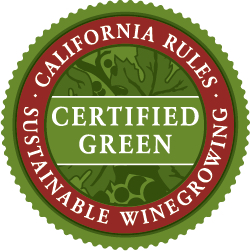
Today — Dramatic growth of Lodi’s “Certified Green” program
In September of 2009 I took a job as V.P. of Professional Services at SureHarvest Inc. Since my departure from Lodi, there have been four Sustainable Winegrowing Directors at the Lodi Winegrape Commission. Dr. Stephanie Bolton is the current Director, and she is doing an outstanding job of continuing the leadership role that the Commission plays in the entire world of sustainable winegrowing.
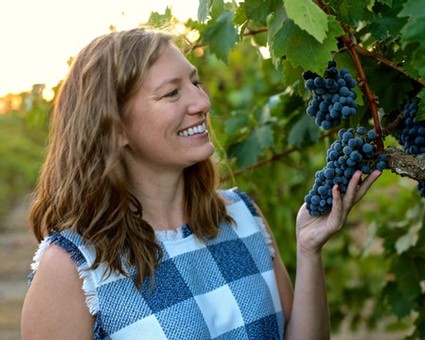
I think everyone is proud of the awards that the Lodi region has garnered for its sustainable wine program; including, during my years in Lodi:
2005 — U.S. EPA Pesticide Environmental Stewardship Program Champion Award (for 2001–2005)
2006 — California Department of Pesticide Regulation’s IPM Innovator Award
2006 — Governor’s Environmental and Economic Leadership Award
2008 — San Joaquin Council of Governments Regional Excellence Award
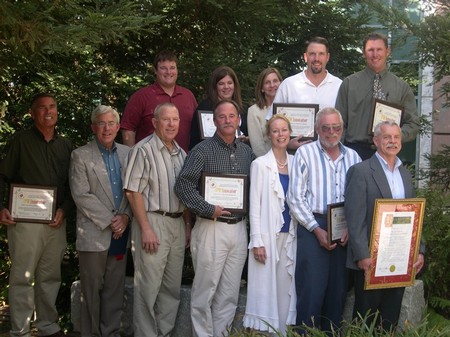
While Lodi’s sustainable winegrowing program has been funded primarily by the grower-members of the Lodi Winegrape Commission, I think the support of the wide range of organizations over the years also bears mentioning. In particular, between 1996 and 2009, some $1.25 million in grants that came from the following:
• U.S. Environmental Protection Agency – National Office
• U.S. EPA Region IX
• California State Water Resources Control Board
• U.S. Department of Agriculture
• Great Valley Center
• CalFed Bay Delta Program
• National IPM Foundation
• Natural Resources Conservation Service (NRCS)
• U.C. Davis
